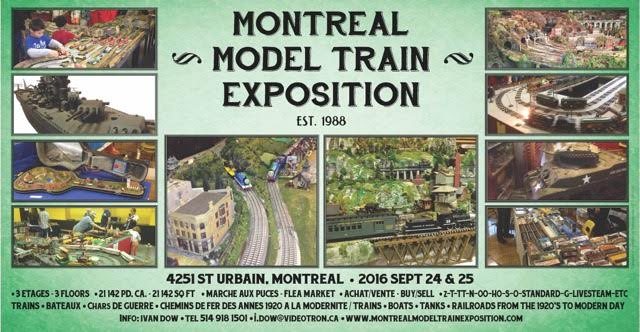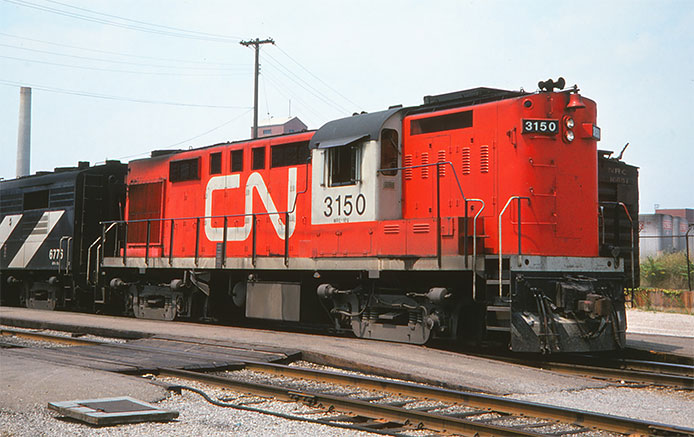MODEL WORK of ROB ARSENAULT
Northern Alberta Railway GMD1 311 in their GMD as-delivered paint scheme.
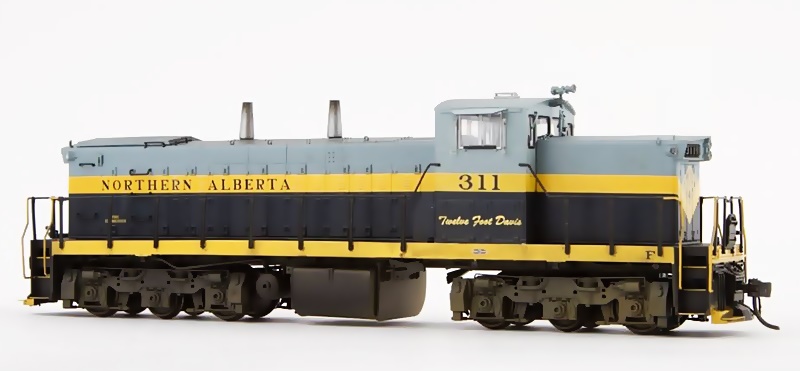
Rob calls this type of brown stripes weathering his Scotford Special. CN has a satellite yard near Edmonton, Alberta called Scotford. The power typically looks like this. However it's typically on SD40-2(W), and on GP40-2(W) units.
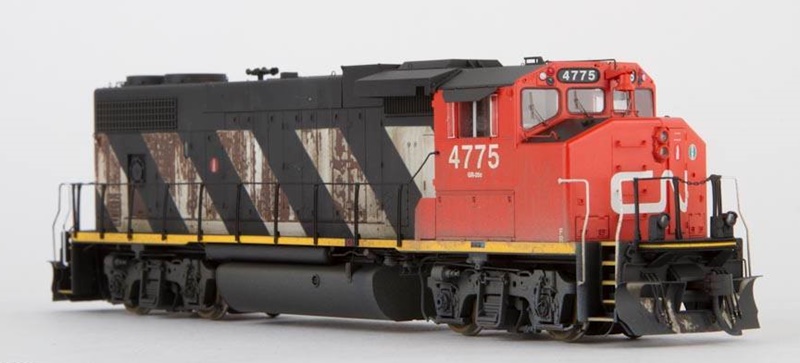
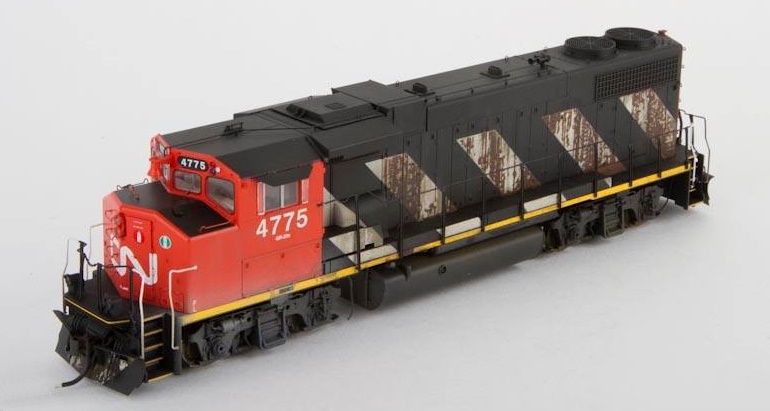
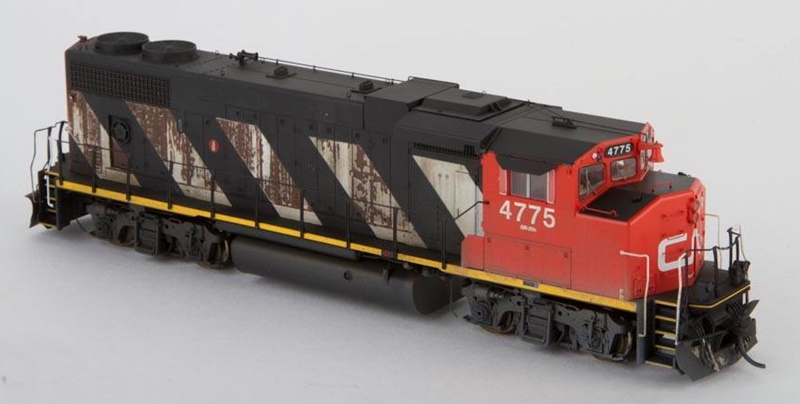
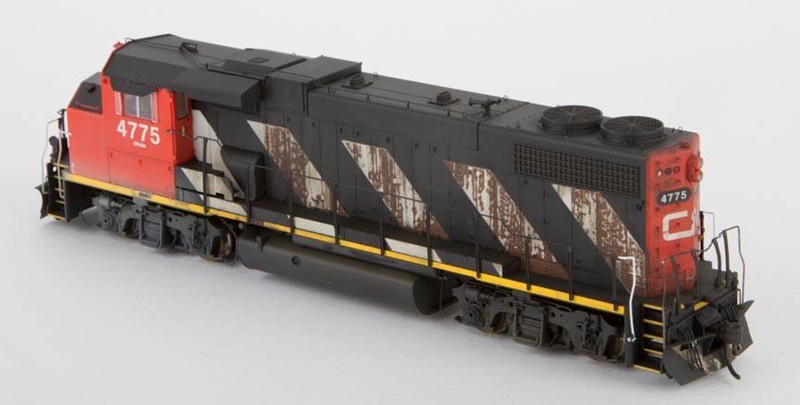
Another utilitarian machine from Overland Models Inc in HO scale brass: a widecab MLW M630W (BCOL 730), with SMD402 LEDs and LokSound Full Throttle.
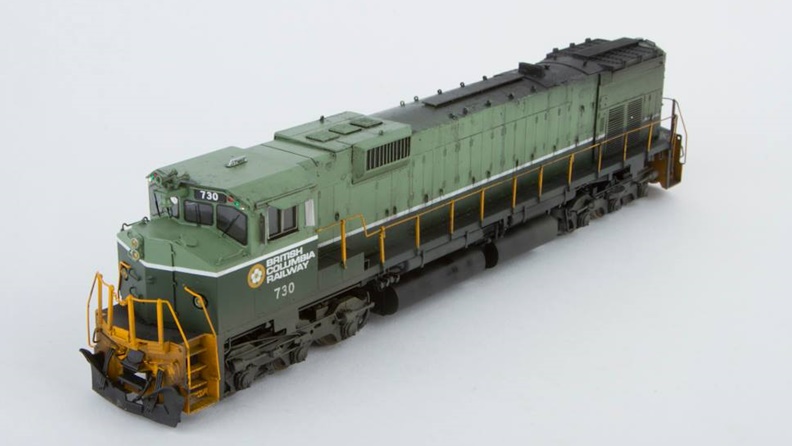
In July, Rob was playing with some more custom paint mixes on this Bowser SD40-2 unit in CP RAIL SYSTEM livery. He had fun experimenting some new fading and weathering techniques.
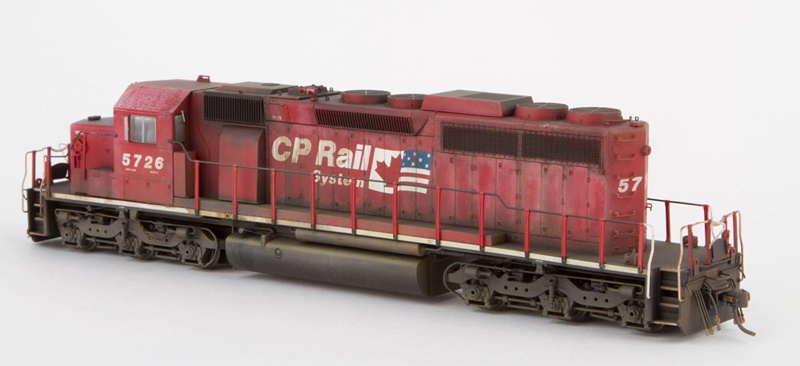
The Northern Alberta Railways paint scheme looks great as HO Scale NAR SD38-2 403 with only subtle weathering.
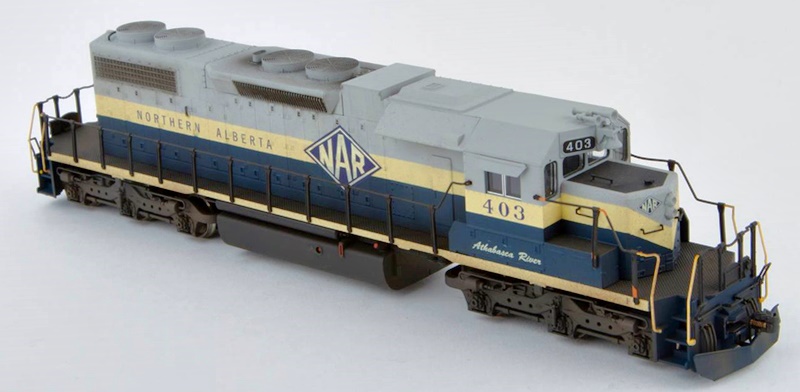
Former CN C630m's, Cape Breton and Central Nova Scotia MLW 6-axle power are heavily weathered nicely!
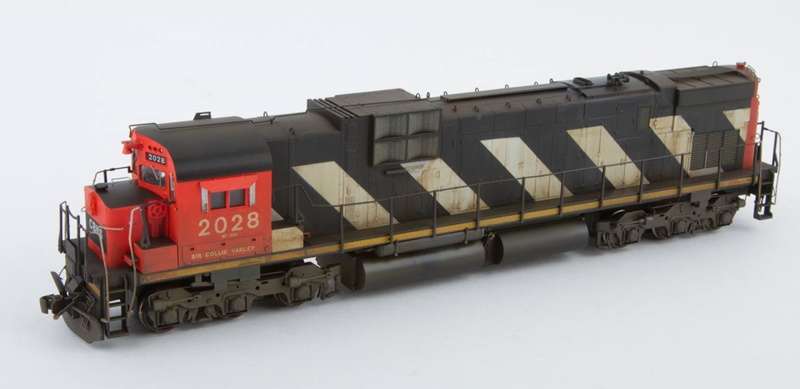
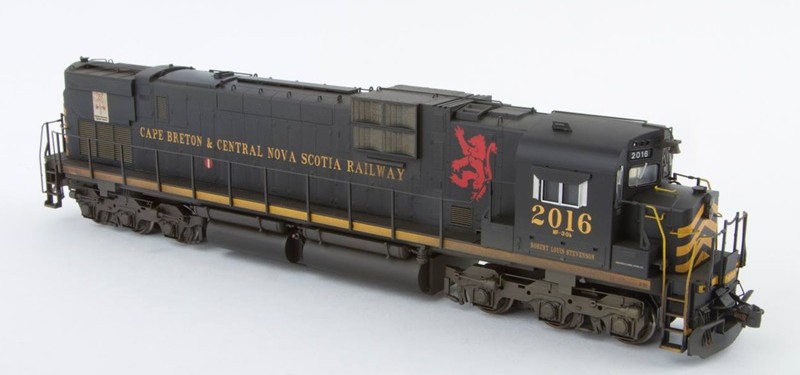
CN SD40-2W 5255 looks lovely in zebra stripes with light weathering.

A Bowser CP RAIL SD40-2 model with full sized Multimark, and some realistic oil weathering on the roof and walkway.
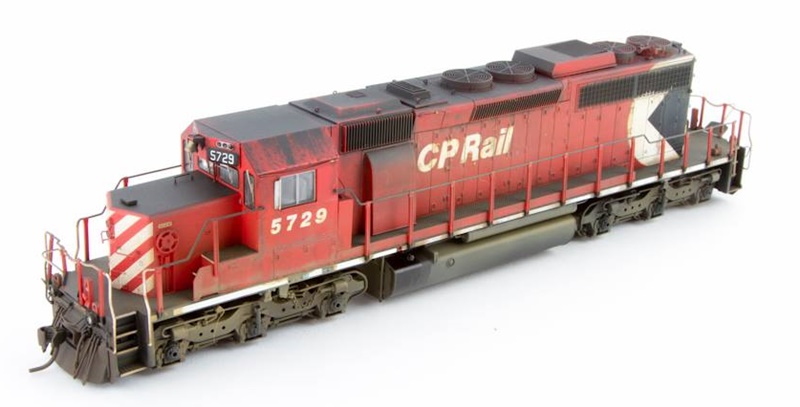
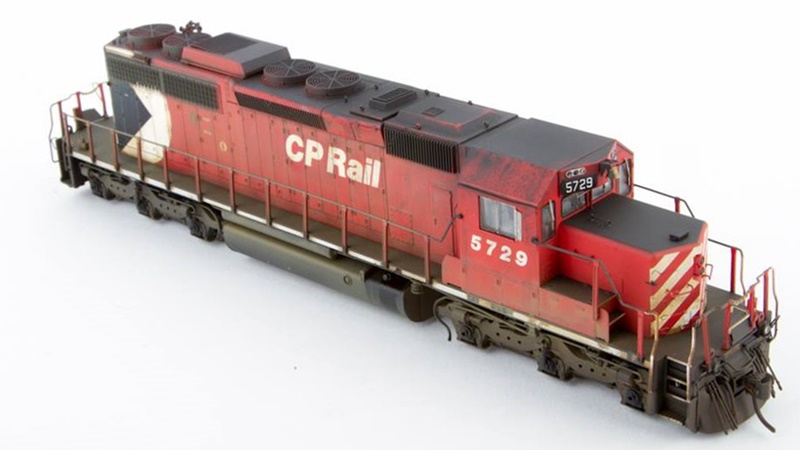
Earl Minnis shot the prototype (Class DRF-30n) CP SD40-2 5729 in Windsor, Ontario. She was built in 1975 at GMD London and was retired in 2011.
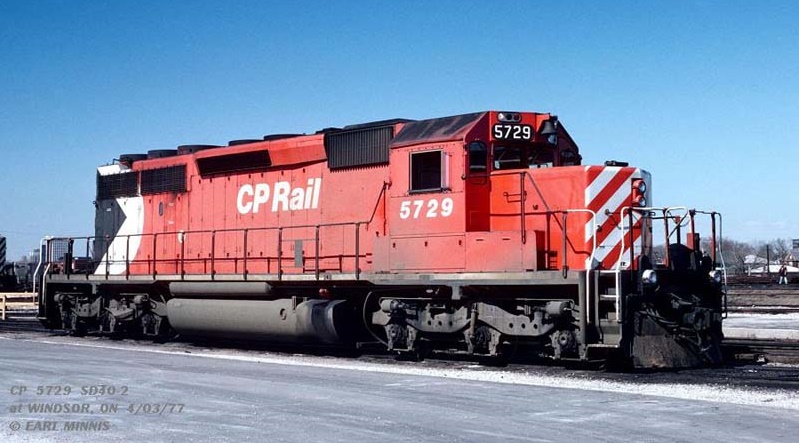
MODEL WORK of DAN DELL'UNTO
Here are a few recent CP boxcar projects I've been working on over the past few months to share with CRO. All are a mix of HO scale Intermountain and Branchline 40' boxcars modified and repainted into CP prototypes according to photos.
According to the file numbers:
1 - CP 52453, a 40' boxcar with 8' doors for general freight service. It started off as a decorated Intermountain Erie Lackawanna car with 6' doors that was stripped in 99% isopropyl alcohol, modified with larger 8' doors from Accurail, longer door tracks and side sills. The roof walk was left off, A-end ladders cut down, and end railings added as per CP's usual "modernization" modifications when removing roof walks. The car was painted with a dark shade of freight car red, and given fresh patches according to photos, before finishing it off with CDS decals for the lettering.
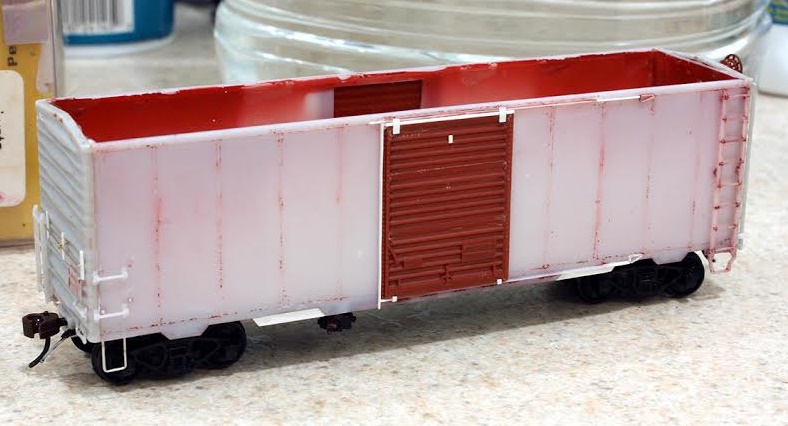
2 - CP 90483 40' boxcar modified with round roof hatches. CP converted a bunch of cars starting in the 1960's with two round roof hatches for potash, grain (and I believe animal hide service?) and renumbered them into the 90000-series. This one started off as an old damaged Branchline kit in the CP Rail livery, which had Intermountain doors, 8-rung ladders, and roof added. The roof was modified with hatches by cutting out panels, replacing them with flat styrene panels according to the prototype, and using modified Intermountain roof hatches from a hopper kit. Support brackets for the roof hatches were scratchbuilt from styrene strips.
The old lettering was sanded smooth prior to the car getting a good coat of primer, then painted freight car red and finished with CDS and Black Cat decals.
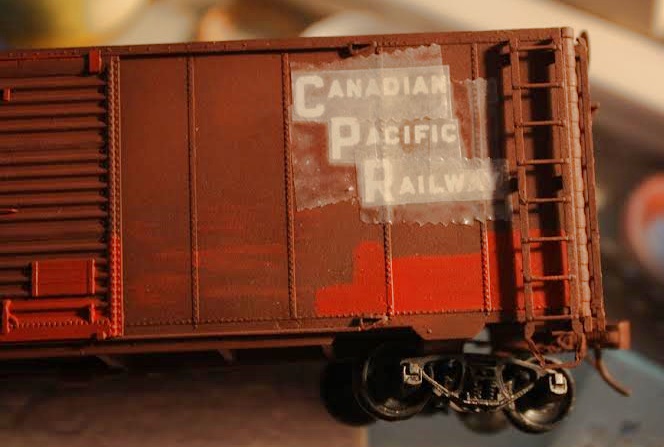
3 - CP 253587, a standard 40' boxcar with 6" doors built in the late 40's, and later "modernized" (removed roof walk and ladders). This started off as an undecorated Intermountain kit, and didn't require too many modifications aside from the ladder modifications and handrails across the ends. Again, painted a darker shade of freight car red and finished with CDS decals. The easiest way to use CDS decals for different number combinations is cutting the digits out, placing them on a piece of tape while making sure they're straight and lined up, sticking that tape to the model and burnishing them on as per instructions (and always seal the car with a clear coat of paint afterwards).
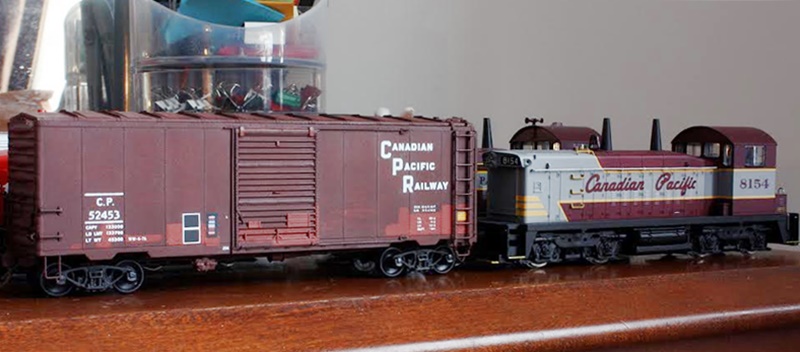
4 / 5 - some more shots of CP 90483 and 253587 together, and the cars in the paint shop along with a few different boxcar roofs for other cars, and a CP stock car project. (Dan Dell'Unto wrote the article and provided his photos).

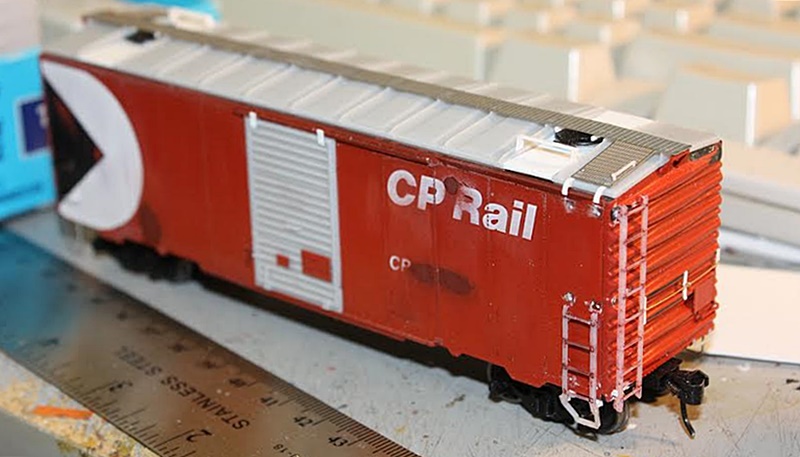
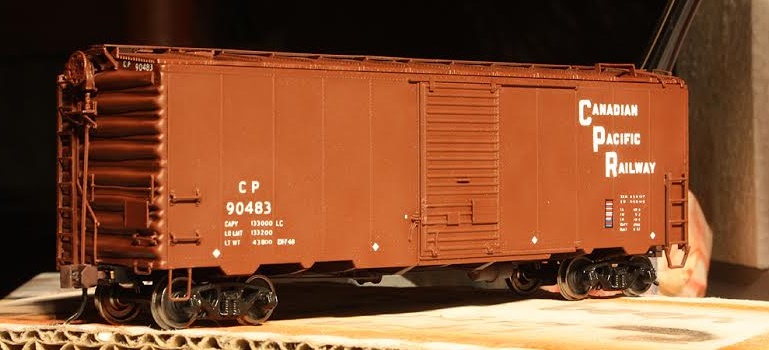
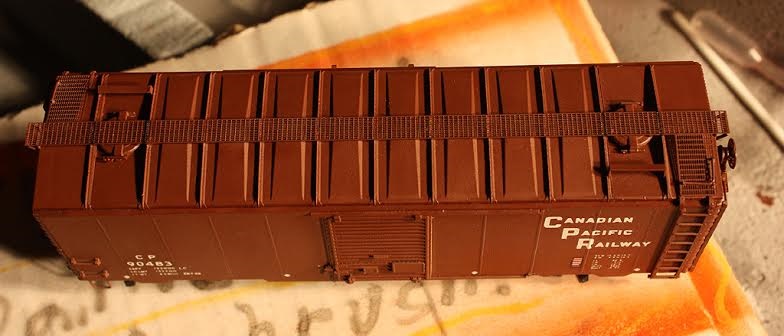
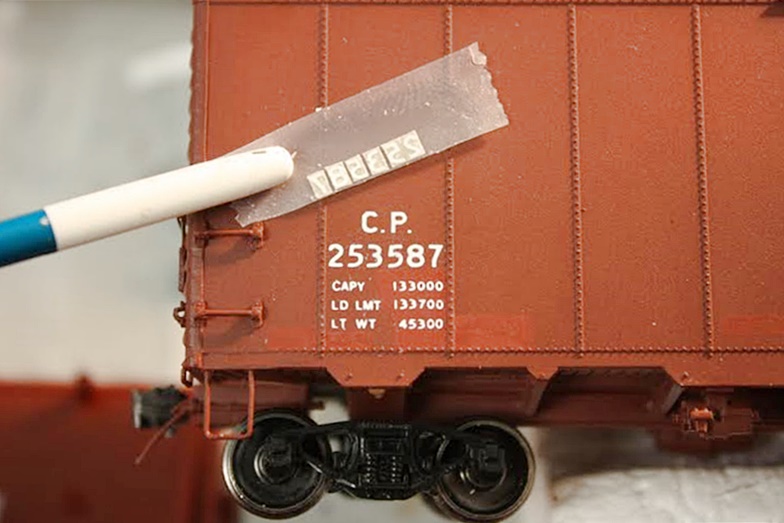
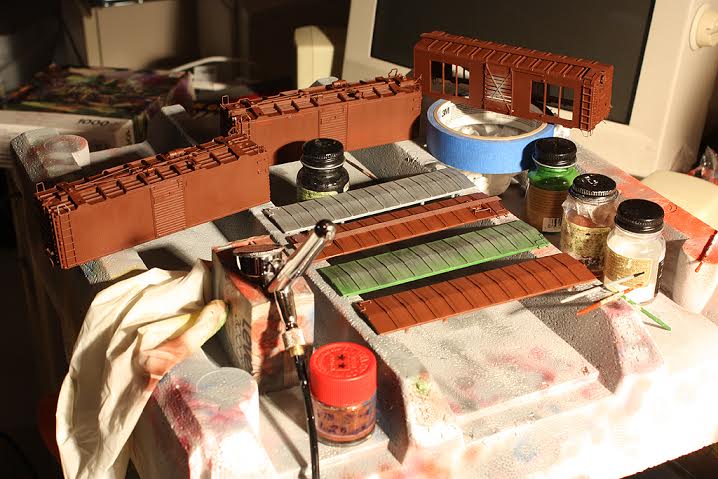
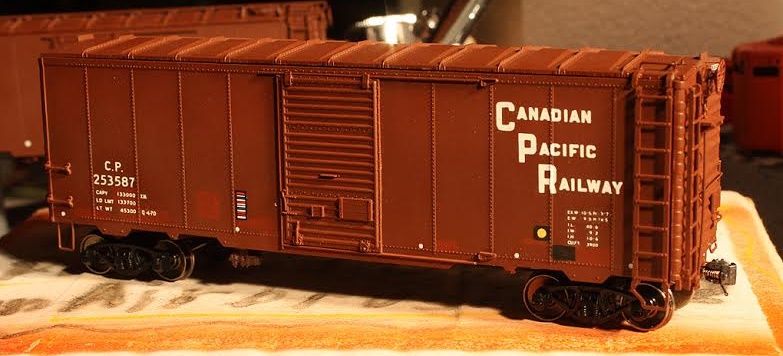
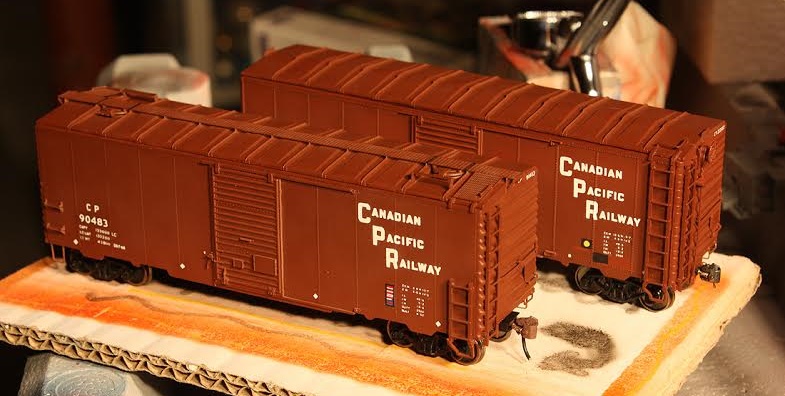
MODEL WORK of TIM HAYMAN
Back in 2000, I took my first VIA trip that I can remember (technically my first was at about a year old), a simple round trip from Brockville to Ottawa. On the return trip, our train was pulled by #6404, which was wearing the Kool-Aid wrap. Ten VIA units received this scheme for a brief while in the summer of 2000, and the scheme didn't last long. Ever since then I've been wanting to model VIA 6404 as it appeared back then. With Rapido Trains new F40PH-2D model on the market, now seemed like the right time to do it.
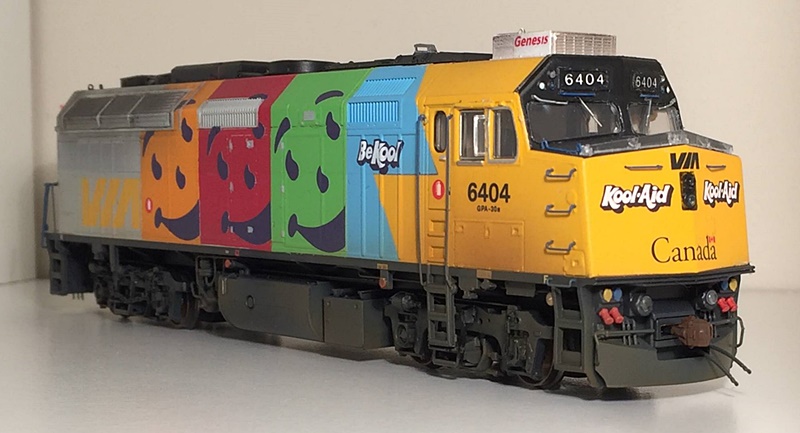
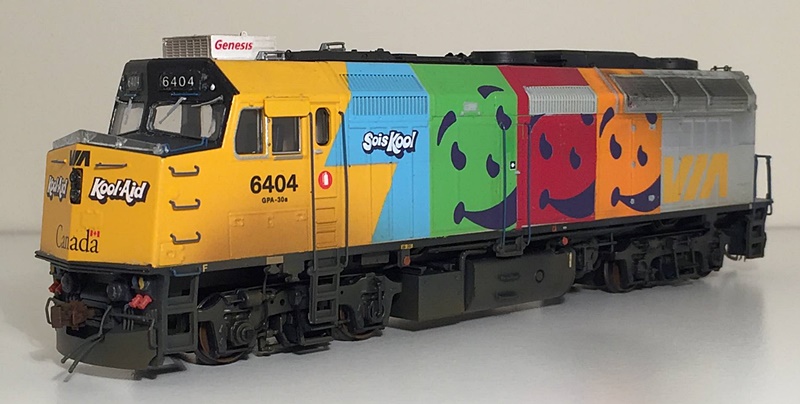
This photo of VIA 6404 taken by Manny Jacob, shows 6404 before the addition of the air conditioner:
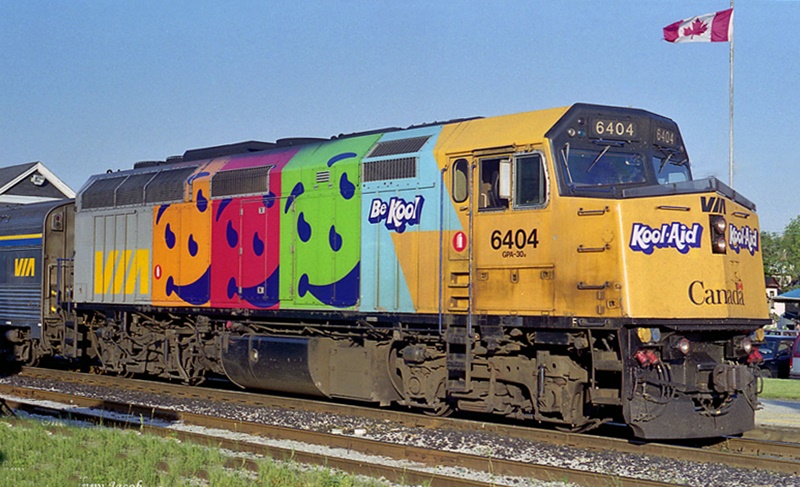
I started with a Rapido loco in the as-delivered VIA scheme. To save some work, I didn't strip the unit. I simply removed the small flags, numbers, and the VIA logo on the nose, as well as the numbers. I then masked and painted over the blue stripe with a grey that deliberately did not match the rest of the grey on the loco. You could often still see where the stripe had been on these locos, so I wanted to match that look. I then masked and painted each of the colour panels, using Tamiya paints mixed to match the colours on the real thing. Once that was done, I used Highball Graphics decals, and weathered the unit to give a good in-service look (airbrushed with acrylics).
Every aspect of this model was matched to the prototype as much as possible. There is no Canada flag on the front of the cab - 6404 was in fact the *only* F40 in the Kool-Aid scheme that didn't have that flag. There is also a sunshade on the conductor's side but not the engineer's side. The air conditioner is painted white with custom "Genesis" decals, to match the original look of the A/C unit that was on this locomotive when I rode behind it. I also painted the cab seats black (they are blue in the Rapido models due to an error on the paint diagrams), and positioned the windshield wipers in a more typical position.
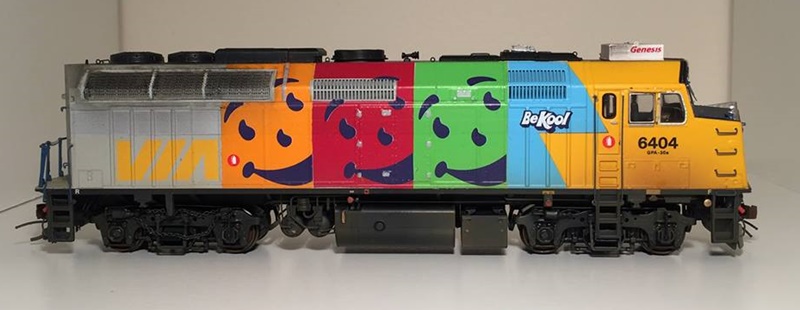
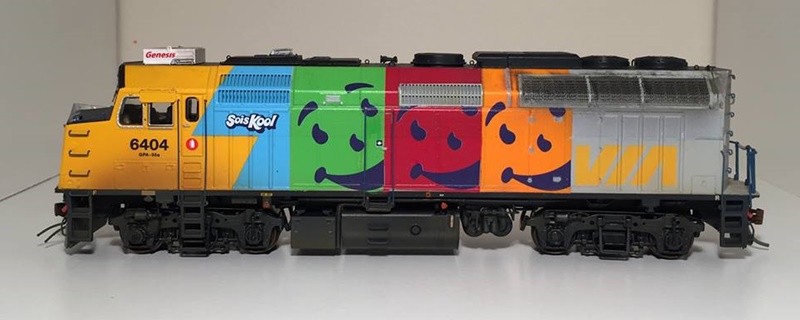
Here are two VIA Kool-Aid prototype photos that are available in the CRO Archives . VIA 6411 was taken by Joseph Bishop, and the other is from Bob Heathorn (the side-view photo). Both of them show VIA 6411, so note that there are some differences between that and VIA 6404 that Tim modeled.
There were a total of ten units that got the Kool-Aid wrap. These were VIA 6404, 6405, 6406, 6411, 6424, 6432, 6433, 6439, 6453 and 6454. (CRO VIA Editor - Tim Hayman)
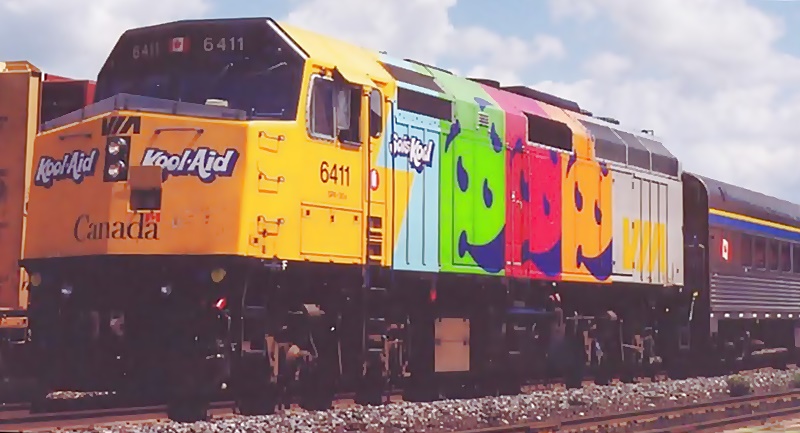
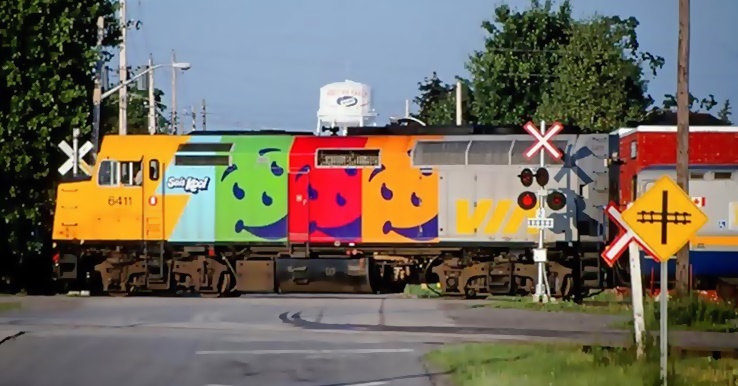
Advertise Your Next Model Railroad Event in CRO
Click the banner below
MODELLING FROM THE PROTOTYPE
GRAFFITTI ! Although most model railroaders myself included despise it, it is part of our railroad culture nowadays. Anyone modeling the current era CP or CN, most rail cars now have the tag marks. Here some interesting recent examples:
Two current (2016) CN 50-Box Cars with different style lettering and of course Graffiti.
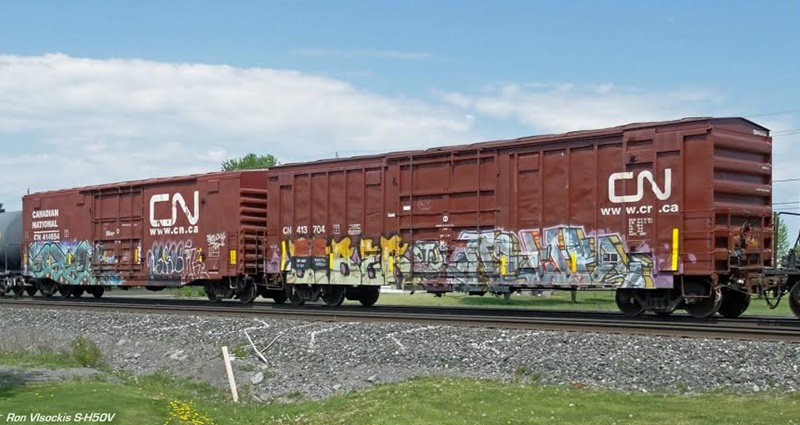
50-foot Pullman Standard box car RJCD 5100 by Nestor Gonzales
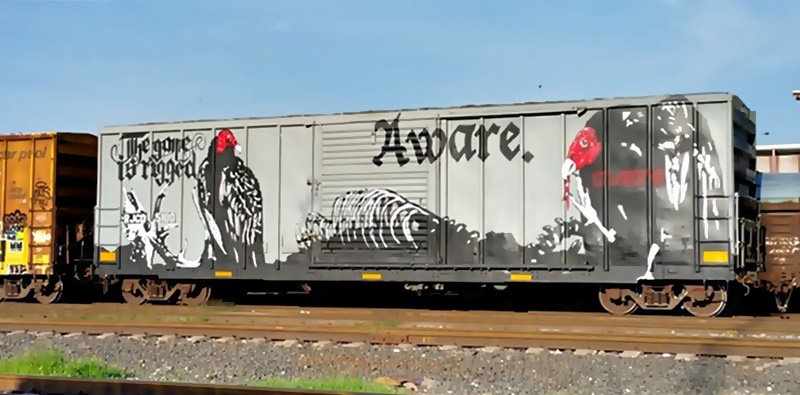
A NOKL Gondola with full graffiti and note the relettering work!
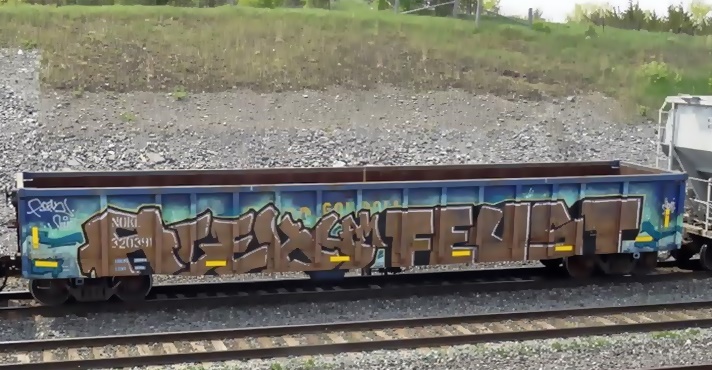
No graffiti but for those wanting a challenge, maybe somebody would like to attempt modelling this. :-) If you do, send us some photos.
MODELLING ON A BUDGET
The Budget Modelling Guy
Need some containers? I use the same technique I use to make buildings and that is using my printer to make what I need. Find some images of containers then resize them to what ever scale you are working in. Construct a box using card stock and paste the printed images on them. By creating images with the side and ends together it only requires two pieces to cover the blank you created, Below the printed images ready for pasting. All the details of the end pieces are complete with all the locking bars and other markings.
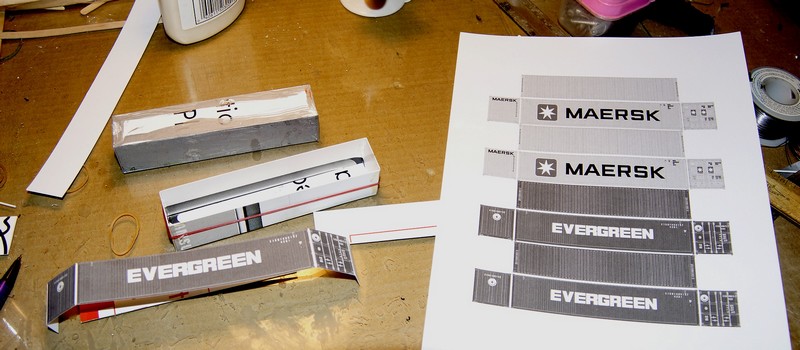
Here are the two different images created for the different containers. I even made some with my own road name Wally World Shortlines on them.


Below we see the finished containers riding on some flat cars. The sand tower was created using three discarded CO2 cartridges I found while out riding on the bike trail in my area. The water tower is more of the coffee stirs sticks from the dollar store. Model railroading is all about having fun and creating things without spending lots of money.
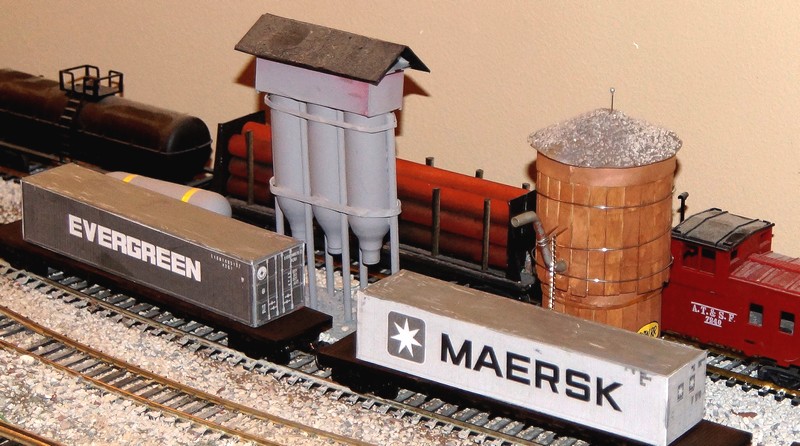
We will have more budget modelling ideas next month or send us yours to The Budget Modeller
Happy Modelling.
MODEL RAILWAY CLUB LISTING
Please submit your listings Model Railway Club Listings for insertion in the next issue.
ONTARIO:
St. Jacobs & Aberfoyle Model Railway
St. Jacobs & Aberfoyle Model Railway is North Americas finest "O"Scale Layout and showcases Southern Ontario during the 1950"s.
QUEBEC:
West Island HO scale Modular Railroad Club
http://wimrc.ca/
The Montreal, Vermont and Essex Model Railway Club
(Montreal, QC)
www.montrealvermontrr.com
The Montreal, Vermont and Essex Model Railway Club is an HO
Scale layout modeling CN, CP, CV, and B&M in Quebec and Vermont in the 1950"s,
but members also operate 1970"s, and 1980"s trains as well on occasion.
Vermont and Essex Model Railway Facebook:
https://www.facebook.com/groups/514127815316977/776687015727721/?notif_t=group_activity
Societe de Modelisme Ferroviaire de Quebec (SMFQ):
http://smfq.org/
Sorel - Tracy Model Railroad Club (FACEBOOK PAGE)
https://www.facebook.com/Chemin-de-Fer-Sorel-Richelieu-et-St-Laurent/129214287194241
Click HERE to Submit Photos to Modellers Corner
Canadian National Canadian Pacific VIA Rail AMT/GO/WCE Canadian Locomotive Shops Regionals & Shortlines
Tourist Lines & Museums South Of The Border Modellers Corner Letters To The Editor Your Comment Welcome
Copyright CRO September 2016


